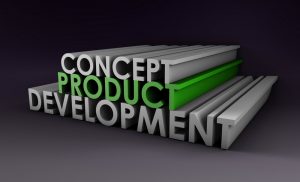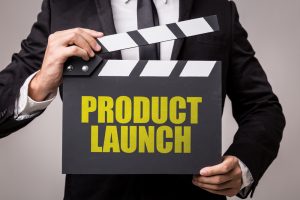Editor's Note: Take a look at our featured best practice, Product Lifecycle (34-slide PowerPoint presentation). Product Lifecycle Analysis is an invaluable tool for developing a robust product marketing strategy. Marketers and strategists can use this analysis to predict sales growth, associated customer and competitor behaviors, and, in turn, devise the appropriate product marketing strategy. The Product [read more]
What to Know about New Product Development and Steps to Get Started
Also, if you are interested in becoming an expert on Strategy Development, take a look at Flevy's Strategy Development Frameworks offering here. This is a curated collection of best practice frameworks based on the thought leadership of leading consulting firms, academics, and recognized subject matter experts. By learning and applying these concepts, you can you stay ahead of the curve. Full details here.
* * * *

However, some of the biggest hurdles in product development is knowing the target consumer, which must take place at the initial stages of product development. Another problem is beating the competition by innovating your product in such a way that it solves customer problems better than the competition.
To effectively overcome these challenges, Avomeen effectively transforms your idea into an on-the-shelf product, easing you the pains involved in the product development process. Below are some of the steps to help you get started:
Discover customer needs
The first step is to survey your customers by developing a set of interview questions to help you gauge their product needs. Other people to be considered at this step are your employees, especially those who closely interact with customers, to get ideas on what would be the best breed of products that can be adopted and accepted by these clients. Additionally, evaluate the industry, especially your competitors, to understand the misses in their product offerings. And what you can do to beat them to the market.
Develop a hypothesis
Based on the observations from customer surveys on your given product niche. Make well-informed decisions on the product features that would be most accepted by them. Best ideas should be selected through objective determination, which includes testing and feedback from target customers. Involve the management as the top decision-makers and ensure you finetune the list to 1 or 2 ideas.

Prototypes play a vital role in the product development process; they help in bringing out feedback loops that promote the growth of product ideas. One of the standard operating procedures in product development is that a prototype must accompany every development step. Prototypes generally validate the workings of your product design.
Unlike functional prototypes, aesthetic prototypes are preferred. An anesthetic prototype speaks to the customer through its feel, color, and shape. It is a complete design that goes beyond mere functionality. The feedback from clients concerning the given prototype can then be used to adjust the product design accordingly. For instance, in the vehicle manufacturing industry, prototypes are made of clay, which is later displayed at auto shows for customer reactions.
Testing with customers
The prototype is presented to the clients to get an understanding of how they will use it and whether it solves their pressing problems. It is more of a feasibility study pre-production. That evaluates the product features and provides critical information for product success. Also, offer test groups and beta tests at this stage.
Analyze Variance
Analyzing variance means, comparing the expected outcome with the observed results. The comparison provides information that can be far-reaching in terms of the positive implications for your design. Which you can leverage on to shape your strategy.
Pilot run Technicalities
It is the first round of production, where you conduct a small trial run to ensure production runs smoothly. A pilot run forms about 10% of the total output, and is a useful pointer to a seamless production, by showcasing its efficiency. Any quality defect to the final product should be caught in this step.
So, the production department can make plans on full production, the marketing department, on the other hand, can prepare their marketing plans and finally, the finance department can start provisioning finance to jumpstart the going-to-market activities.
A successful pilot run means you are ready for commercialization, and you can go full throttle on production. It means all technical aspects of the products have been perfected from the beta tests.
Prepare for the launch
Before the product launch, it is always good to have ascertained your target market. So that you can efficiently promote your product. The effectiveness of your brand awareness will result in a promising product launch. Some of the best tactics to employ are: ensuring you build hype and educate users on your product. This can be achieved through blogs, getting air-time on television, creating giveaway contests as well as keeping social media users updated.
After the launch, you can re-evaluate your market and understand if you have gotten buy-in from your consumers. If so, you can re-adjust your introductory-pricing. But more importantly, endeavor to continuously differentiate your products with regards to your changing consumer needs.
Conclusion
A systematic and stepwise approach to product development will help your organization monitor its schedule, resources, and costs by keeping them under control. Any company engaged in product development should also understand that it is an evolving process that varies with regard to the nature and scope of each project.

Want to Achieve Excellence in Strategy Development?
Gain the knowledge and develop the expertise to become an expert in Strategy Development. Our frameworks are based on the thought leadership of leading consulting firms, academics, and recognized subject matter experts. Click here for full details.
"Strategy without Tactics is the slowest route to victory. Tactics without Strategy is the noise before defeat." - Sun Tzu
For effective Strategy Development and Strategic Planning, we must master both Strategy and Tactics. Our frameworks cover all phases of Strategy, from Strategy Design and Formulation to Strategy Deployment and Execution; as well as all levels of Strategy, from Corporate Strategy to Business Strategy to "Tactical" Strategy. Many of these methodologies are authored by global strategy consulting firms and have been successfully implemented at their Fortune 100 client organizations.
These frameworks include Porter's Five Forces, BCG Growth-Share Matrix, Greiner's Growth Model, Capabilities-driven Strategy (CDS), Business Model Innovation (BMI), Value Chain Analysis (VCA), Endgame Niche Strategies, Value Patterns, Integrated Strategy Model for Value Creation, Scenario Planning, to name a few.
Learn about our Strategy Development Best Practice Frameworks here.
Readers of This Article Are Interested in These Resources

|
|
136-slide PowerPoint presentation
|
|
46-slide PowerPoint presentation
| |||
About Shane Avron
Shane Avron is a freelance writer, specializing in business, general management, enterprise software, and digital technologies. In addition to Flevy, Shane's articles have appeared in Huffington Post, Forbes Magazine, among other business journals.
Top 10 Recommended Documents on Product Launch Strategy
» View more resources Product Launch Strategy here.
» View the Top 100 Best Practices on Flevy.













